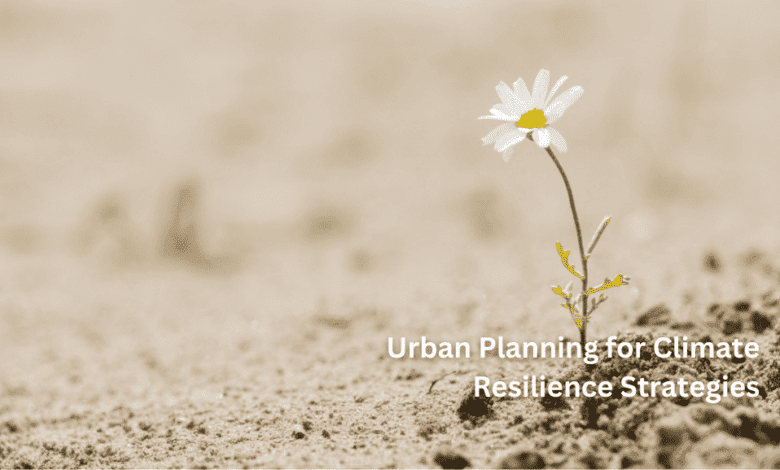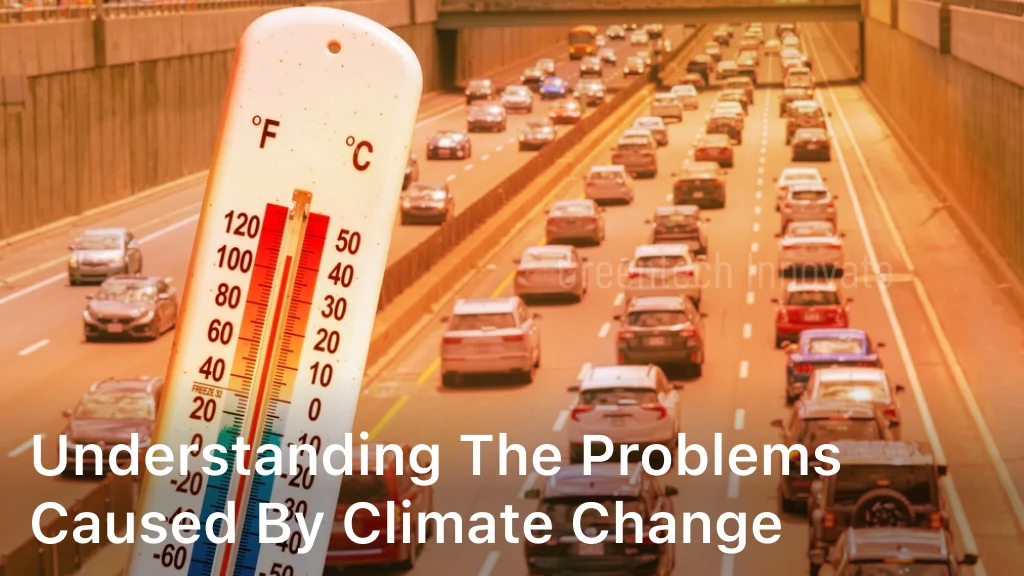
Welcome to our comprehensive guide on urban planning for climate resilience. In this article, we will explore innovative strategies to enhance urban planning practices, ensuring cities are better prepared to tackle the challenges of climate change. By integrating sustainable and resilient approaches into the urban fabric, we can create livable environments that are able to withstand and adapt to future climate impacts.
Climate change poses significant challenges to urban areas, including rising temperatures, increased flooding, and extreme weather events. However, with the right planning and design strategies, cities can mitigate these risks and build a sustainable future. By focusing on concepts such as green infrastructure, sustainable transportation, energy-efficient buildings, community engagement, and climate-resilient land use planning, we can create cities that are prepared for the uncertainties ahead.
Throughout this article, we will delve into each of these topics, exploring their importance and showcasing successful case studies from around the world. Whether you are a city planner, architect, policymaker, or simply interested in the future of urban environments, this guide will provide valuable insights into how urban planning for climate resilience can shape a better tomorrow.
Understanding the Impact of Climate Change on Urban Areas
Climate change poses significant challenges to urban areas around the world. As temperatures continue to rise and extreme weather events become more frequent, cities are experiencing the direct consequences of a changing climate. It is crucial to understand the impact of climate change on urban areas in order to develop effective strategies for building climate resilience.
Climate-related Challenges for Urban Areas:
- Rising Temperatures: Urban heat islands, caused by the concentration of buildings and pavement, contribute to higher temperatures in cities. This can lead to increased energy demand for cooling, a higher risk of heat-related illnesses, and reduced air quality.
- Increased Flooding: Changes in precipitation patterns and sea level rise put urban areas at a higher risk of flooding. This can lead to property damage, disruption of critical infrastructure, and the displacement of residents.
- Extreme Weather Events: Cities face an increased frequency and intensity of extreme weather events, such as hurricanes, storms, and droughts. These events can cause widespread destruction, result in loss of life, and severely impact urban infrastructure.
By gaining a deeper understanding of these challenges, we can develop effective strategies for climate resilience in urban areas. This involves integrating climate adaptation measures into urban planning and infrastructure development, as well as implementing policies that reduce greenhouse gas emissions and promote sustainable practices.
Next, we will explore the importance of integrating green infrastructure in urban planning, which plays a crucial role in mitigating the impact of climate change on cities and enhancing their resilience.
Integrating Green Infrastructure in Urban Planning
In this section, we will explore the importance of integrating green infrastructure in urban planning to promote climate resilience. Green infrastructure refers to the strategic use of natural systems and elements, such as parks, green roofs, and permeable pavement, in urban areas. These nature-based solutions can help mitigate the adverse effects of climate change and enhance the overall resilience of cities.
- Benefits of Green Infrastructure: Integrating green infrastructure in urban planning offers a range of benefits. It helps reduce urban heat island effects by providing shade and cooling mechanisms, improves air quality by capturing pollutants, and enhances biodiversity by providing habitats for various species.
- Implementation Strategies: There are various strategies to implement green infrastructure in urban planning. These include incorporating green spaces in urban design, retrofitting existing buildings with green roofs, and utilizing permeable pavement to manage stormwater runoff. By integrating green infrastructure into the fabric of cities, we can create greener, healthier, and more sustainable urban environments.
- Case Studies: Throughout this section, we will showcase case studies that demonstrate successful integration of green infrastructure in urban planning. These examples will highlight real-life projects and initiatives from cities around the world, providing practical insights into how green infrastructure can be effectively implemented and the positive outcomes it can bring.
By integrating green infrastructure in urban planning, cities can become more resilient to climate change and better equipped to withstand the challenges it presents. The strategic use of natural elements not only enhances the environment but also improves the overall quality of life for urban residents. In the following sections, we will continue to explore other aspects of climate-resilient urban planning, including sustainable transportation, energy-efficient buildings, community engagement, and land use planning.
Promoting Sustainable Transportation and Mobility
Promoting sustainable transportation and mobility is a critical aspect of climate-resilient urban planning. By adopting innovative transportation solutions, cities can reduce greenhouse gas emissions, alleviate traffic congestion, and enhance urban resilience.
Innovative Transportation Solutions for Sustainable Urban Planning
- Bike Lanes: Creating dedicated and safe cycling infrastructure encourages residents to embrace cycling as a sustainable mode of transportation. This reduces reliance on private vehicles and promotes physical activity.
- Efficient Public Transportation Systems: Robust and well-connected public transportation networks, including buses, trams, and subways, provide convenient alternatives to private vehicles. Prioritizing the expansion and improvement of public transportation infrastructure promotes sustainable mobility.
- Electric Vehicles: Encouraging the adoption of electric vehicles (EVs) reduces the use of fossil fuels and lowers carbon emissions. Supporting the development of EV charging infrastructure and providing incentives for EV ownership incentivizes sustainable transportation choices.
By integrating these innovative transportation solutions into urban planning, cities can create sustainable and accessible mobility options for their residents. This not only reduces the carbon footprint but also enhances the livability and quality of urban environments.
Enhancing Building Design and Energy Efficiency

In today’s rapidly changing climate, enhancing building design and energy efficiency plays a crucial role in urban planning. By implementing innovative strategies, we can create climate-resilient buildings that not only minimize energy consumption but also promote the well-being of residents and the environment.
Designing Climate-Resilient Buildings
Building design is a key factor in addressing the challenges posed by climate change. Through thoughtful and strategic design choices, we can create structures that are more resistant to climate-related risks and can withstand extreme weather events.
Some effective design strategies include:
- Maximizing natural ventilation and lighting to reduce the need for artificial cooling and lighting systems.
- Implementing passive solar design techniques to optimize heat gain in winter and minimize it in summer.
- Using high-performance insulation materials to reduce heat transfer and improve energy efficiency.
- Incorporating green roofs and walls to improve building insulation, reduce the urban heat island effect, and enhance biodiversity.
Integrating Renewable Energy Sources
Another important aspect of building design is the integration of renewable energy sources. By harnessing clean and sustainable energy, buildings can reduce their reliance on fossil fuels and lower greenhouse gas emissions.
Some renewable energy options that can be incorporated into buildings include:
- Installing solar panels to generate electricity and heat water.
- Utilizing geothermal systems for heating and cooling.
- Using wind turbines to generate electricity.
The Role of Green Building Certifications and Standards
Green building certifications and standards play a significant role in promoting energy-efficient urban development. They provide guidelines and benchmarks for sustainable construction practices, helping to raise awareness, drive innovation, and shape industry standards.
Some notable green building certifications and standards include:
- LEED (Leadership in Energy and Environmental Design)
- BREEAM (Building Research Establishment Environmental Assessment Method)
- Green Star
These certifications help identify buildings that meet specific sustainability criteria, such as energy efficiency, water conservation, and indoor environmental quality.
By enhancing building design and energy efficiency, we can create cities that are more resilient to climate change and provide a better quality of life for their residents. Through thoughtful planning and the integration of sustainable technologies, we can pave the way for a greener and more sustainable urban future.
Engaging Communities in Climate-Resilient Urban Planning
Engaging communities is paramount for effective climate-resilient urban planning. As we tackle the challenges posed by climate change, it is crucial to involve local communities in decision-making processes, ensuring inclusivity, and fostering resilience at the grassroots level.
One of the key strategies for engaging communities in climate-resilient urban planning is through community participation. By involving residents, businesses, and organizations in the planning and implementation of strategies, we can tap into their local knowledge, experiences, and needs, fostering a sense of ownership and empowerment.
Education and awareness play essential roles in building climate-resilient cities. By providing information and resources on climate change impacts and adaptation, we can empower communities to take action and make informed decisions. Workshops, seminars, and public outreach campaigns can help promote understanding and encourage sustainable practices.
Another critical aspect of community engagement is ensuring that the voices of marginalized and vulnerable groups are heard and represented. Inclusivity in decision-making processes can lead to more equitable and resilient urban planning. By actively seeking diverse perspectives and addressing the specific needs and concerns of these groups, we can develop strategies that benefit all members of the community.
To foster community engagement in climate-resilient urban planning, it is essential to create platforms for dialogue and collaboration. This can be achieved through the establishment of community working groups, citizen advisory boards, or online forums. These platforms enable residents to contribute ideas, provide feedback, and participate in shaping the future of their neighborhoods.
Key Strategies for Engaging Communities:
- Promote community participation in decision-making processes
- Provide education and awareness on climate change and adaptation
- Ensure the inclusion of marginalized and vulnerable groups
- Establish platforms for dialogue and collaboration
By engaging communities in climate-resilient urban planning, we can harness the collective power and expertise of local residents to build cities that are more adaptive, sustainable, and resilient to the impacts of climate change. Together, we can create a future where urban spaces thrive in the face of environmental challenges.
Integrating Climate Resilience into Land Use Planning
In this section, we will explore the crucial role of integrating climate resilience into land use planning. By incorporating climate-related considerations into zoning, land use regulations, and spatial planning, cities can reduce their vulnerability to climate hazards and ensure long-term sustainability.
The Importance of Zoning and Land Use Regulations
Zoning and land use regulations play a fundamental role in guiding the development and use of land within a city. When considering climate resilience, these regulations can help achieve several key objectives:
- Promote the use of land in areas less prone to climate-related risks, such as floodplains or landslide-prone areas.
- Set standards for building design and construction that enhance resilience to weather events, such as hurricanes or heatwaves.
- Encourage the preservation of green spaces and natural areas that provide important ecosystem services, such as stormwater absorption and carbon sequestration.
Spatial Planning for Climate Resilience
Spatial planning involves considering the arrangement and design of a city’s physical elements to promote efficiency, functionality, and sustainability. When integrated with climate resilience, spatial planning can:
- Identify areas with higher exposure to climate risks, such as coastal zones prone to sea-level rise, and develop appropriate adaptation strategies.
- Promote compact and mixed-use urban developments that reduce the need for long commutes and encourage active transportation.
- Ensure the equitable distribution of climate-resilient infrastructure, such as transportation networks, green spaces, and emergency services.
Case Studies of Successful Integration
To illustrate the effectiveness of integrating climate resilience into land use planning, we will examine case studies from cities around the world. These examples will highlight innovative approaches and strategies that have resulted in more resilient urban areas:
- The Lowline in New York City, which transformed an abandoned underground trolley terminal into an underground park that mitigates urban heat island effect and enhances community resilience.
- The Resilience District Concept in Copenhagen, Denmark, which integrates climate-smart measures into urban planning, resulting in a resilient and adaptable district that can withstand the impacts of climate change.
- The River of Life Project in Kuala Lumpur, Malaysia, which revitalized the city’s riverfront, enhancing flood management and creating a vibrant and sustainable urban environment.
By learning from these case studies and embracing the integration of climate resilience into land use planning, cities can become more prepared, adaptable, and sustainable in the face of climate change.
Conclusion
Urban planning for climate resilience is essential in creating sustainable and livable cities that can effectively mitigate the impacts of climate change. By integrating innovative strategies into urban planning, we can build resilient cities that prioritize the well-being and safety of all residents.
One crucial strategy is the integration of green infrastructure, such as parks, green roofs, and permeable pavement. These features not only enhance the aesthetic appeal of cities but also help mitigate the adverse effects of climate change, such as heatwaves and flooding. By incorporating green infrastructure, urban planners can create environments that promote biodiversity, improve air quality, and reduce the risk of extreme weather events.
Sustainable transportation and mobility also play a vital role in climate-resilient urban planning. Investing in efficient public transportation systems, bike lanes, and promoting electric vehicles can significantly reduce greenhouse gas emissions and improve air quality. Additionally, these initiatives enhance the overall resilience of cities by offering alternative modes of transportation that are less susceptible to climate hazards.
Engaging communities in decision-making processes is another crucial aspect of climate-resilient urban planning. Involving local residents fosters inclusivity, ensures that the needs and concerns of all community members are considered, and builds a sense of ownership over the urban environment. The active participation of communities contributes to the creation of resilient cities that are better equipped to withstand climate-related challenges.
FAQ
What is urban planning for climate resilience?
Urban planning for climate resilience refers to the process of designing and implementing strategies to mitigate and adapt to climate change in urban areas. It involves creating sustainable and resilient cities that can withstand the challenges posed by climate-related hazards, such as extreme weather events, rising temperatures, and increased flooding.
Why is urban planning for climate resilience important?
Urban planning for climate resilience is important because it helps cities prepare for and respond to the impacts of climate change. By integrating climate resilience strategies into urban planning, cities can minimize risks, protect vulnerable communities, enhance public health and safety, and create sustainable and livable environments for future generations.
What are some strategies for urban planning for climate resilience?
Some strategies for urban planning for climate resilience include integrating green infrastructure, promoting sustainable transportation and mobility, enhancing building design and energy efficiency, engaging communities in decision-making processes, and integrating climate resilience into land use planning. These strategies help cities adapt to climate change, reduce greenhouse gas emissions, and increase overall resilience.
How can green infrastructure be integrated into urban planning?
Green infrastructure can be integrated into urban planning by incorporating elements such as parks, green roofs, permeable pavement, and urban forests. These features help manage stormwater, reduce the urban heat island effect, improve air quality, and provide recreational spaces. By integrating green infrastructure, cities can enhance their climate resilience and create more sustainable and enjoyable urban environments.
What role does community engagement play in climate-resilient urban planning?
Community engagement plays a vital role in climate-resilient urban planning. By involving local communities in decision-making processes, cities can ensure that the needs and concerns of all residents are considered. Community engagement fosters inclusivity, builds social cohesion, and empowers residents to take ownership of climate resilience initiatives. It also enhances awareness, education, and participation, leading to more effective and sustainable outcomes.
How can climate resilience be integrated into land use planning?
Climate resilience can be integrated into land use planning through various strategies, such as zoning regulations, land use policies, and spatial planning. By identifying areas prone to climate-related risks, cities can implement measures to reduce vulnerabilities, protect critical infrastructure, and enhance adaptive capacity. Integrated land use planning ensures that future development is resilient, sustainable, and aligned with climate goals.




